What is Hardscaping?
Hardscaping is an essential component of any well-designed outdoor space, yet many homeowners are often unsure of what it entails. What is hardscaping? In simple terms, hardscaping refers to the non-living elements of a landscape, such as patios, walkways, retaining walls, and outdoor kitchens. Understanding the basics of hardscaping is crucial for homeowners looking to enhance their outdoor living areas and increase the value of their property.
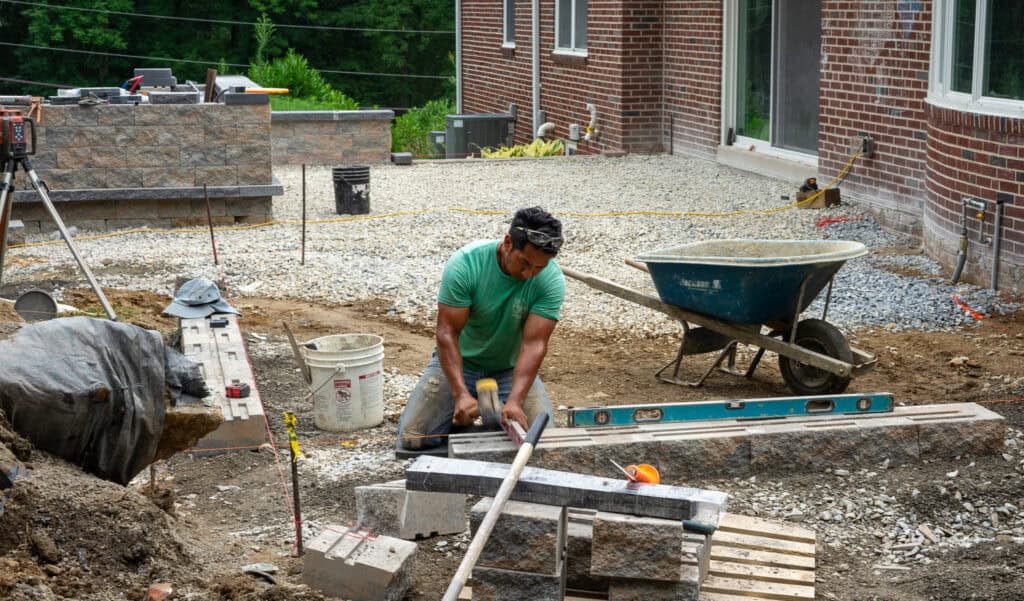
Defining Hardscape vs. Landscape
To understand hardscaping, it’s essential to differentiate between hardscape and landscape elements. Hardscape refers to the solid, non-living features in your outdoor space, such as stone pathways and wooden decks. On the other hand, landscape includes living elements like trees, shrubs, and flowers. By grasping this distinction, homeowners can effectively plan and execute their hardscaping projects with a comprehensive vision in mind.
The Benefits of Hardscaping for Homeowners
Hardscaping offers numerous advantages to homeowners beyond just enhancing the visual appeal of their outdoor space. Incorporating hardscape elements like patios, retaining walls, and pergolas can significantly increase the property value and curb appeal of your home. Additionally, these features require minimal maintenance compared to traditional landscaping, saving you time and effort in the long run. Hardscaping also provides functional spaces for outdoor entertaining, relaxation, and recreation, ultimately extending your living space beyond the four walls of your home.
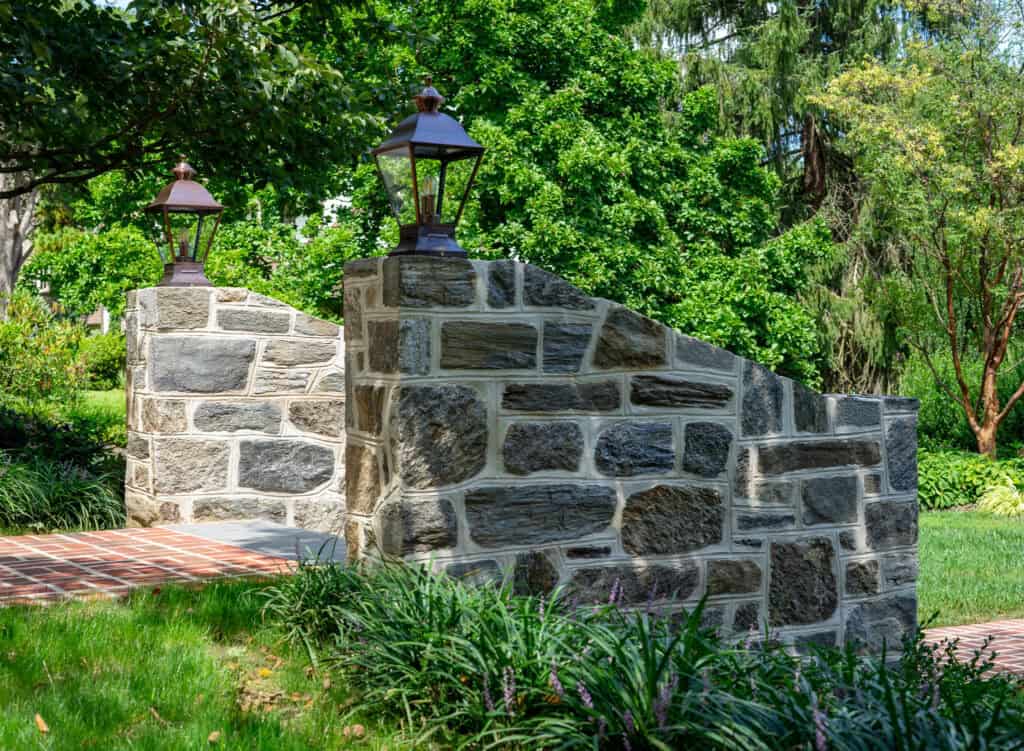
Here’s a rundown of how adding hardscaping to your backyard can be beneficial:
- Increased functionality: Hardscaping elements like patios, walkways, and outdoor kitchens provide functional spaces for activities such as dining, entertaining, and relaxation. These features can extend your living space and make your backyard more usable.
- Improved aesthetics: Hardscaping can enhance the visual appeal of your backyard. Elements like decorative pavers, stone walls, and water features can add texture, color, and interest to the landscape. Hardscaping can also help create a cohesive design that complements the style of your home.
- Low maintenance: Unlike plants and grass, hardscaping requires minimal maintenance. Once installed, features like stone patios or concrete walkways are durable and long-lasting, requiring only occasional cleaning or repairs.
- Increased property value: Well-designed hardscaping can significantly increase the value of your property. Potential buyers often appreciate the added functionality and aesthetic appeal of a landscaped backyard, which can make your home more attractive on the market.
- Erosion control and drainage: Hardscaping elements like retaining walls and drainage systems can help control erosion and manage water runoff. These features can prevent soil erosion, protect your landscape, and prevent water damage to your property.
- Privacy and noise reduction: Hardscaping elements like fences, walls, or pergolas can provide privacy and help reduce noise from neighboring properties or busy streets. These features create a sense of seclusion and tranquility in your backyard.
Overall, hardscaping can transform your backyard into a functional, visually appealing, and low-maintenance outdoor space that you can enjoy for years to come.
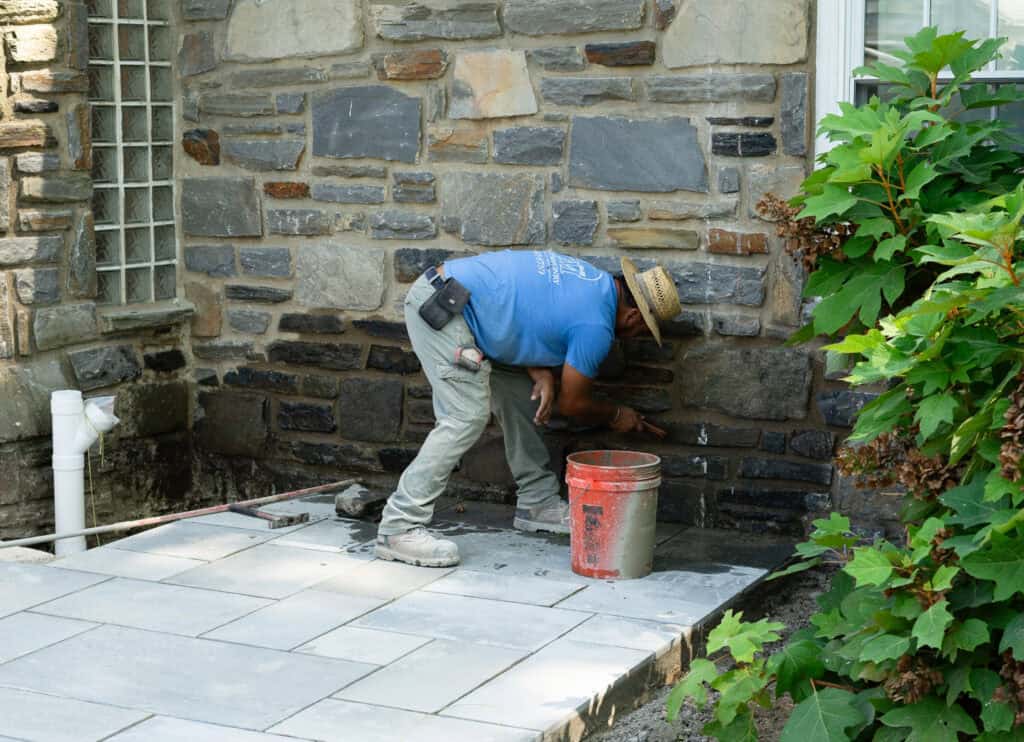
Common Hardscaping Elements and Materials
When it comes to hardscaping, there is a wide range of elements and materials to choose from. Some common hardscaping elements include pathways, fire pits, water features, and outdoor kitchens. Each element serves a specific purpose and can enhance the functionality and aesthetics of your outdoor space.
Materials such as natural stone, concrete pavers, wood, and brick are commonly used in hardscaping projects. These materials vary in durability, cost, and maintenance requirements, so it’s essential to select the right materials based on your preferences and budget.
Here are a list of popular hardscaping materials:
- Concrete: Concrete is a versatile material used for a wide range of hardscaping features such as patios, walkways, driveways, and retaining walls. It can be poured into different shapes and can be stamped or stained to mimic the look of natural stone or brick.
- Pavers: Pavers are individual units made from materials like concrete, clay, or natural stone. They come in various shapes, sizes, and colors, allowing for creative patterns and designs. Pavers are commonly used for patios, walkways, driveways, and pool decks.
- Natural Stone: Natural stone, such as flagstone, slate, or granite, is a popular choice for hardscaping due to its durability and natural beauty. It can be used for patios, walkways, retaining walls, fire pits, and water features. Each type of stone has its own unique characteristics and appearance.
- Brick: Brick is a classic hardscaping material known for its timeless appeal. It is commonly used for patios, walkways, driveways, and walls. Bricks come in different colors and patterns, allowing for various design options.
- Wood: Wood is often used for hardscaping features like decks, pergolas, fences, and arbors. It adds a warm and natural aesthetic to outdoor spaces. However, wood requires regular maintenance to protect it from weathering and decay.
- Metal: Metal materials like steel or aluminum are used for hardscaping features such as fences, gates, railings, and pergolas. Metal can provide a modern and sleek look to the landscape.
- Composite Materials: Composite materials, such as composite decking or composite pavers, are engineered products that combine different materials to create a durable and low-maintenance option. They are often used for decks, patios, and walkways.
These are just a few examples of hardscaping materials, and there are many more options available depending on your preferences, budget, and the desired look for your outdoor space.
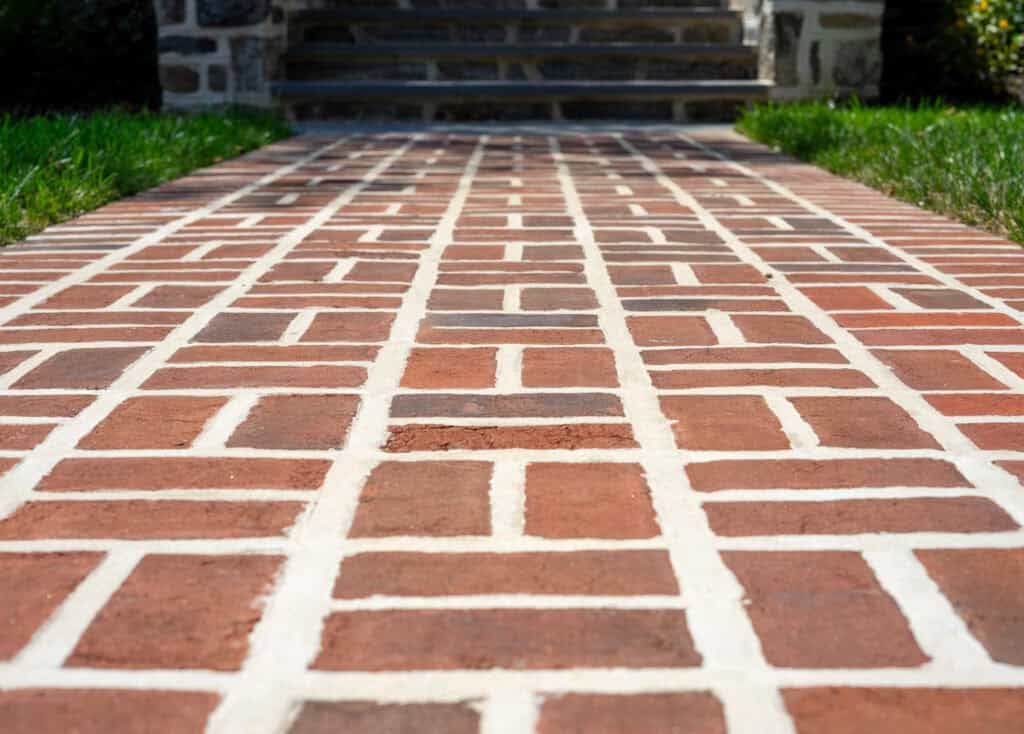
How to Choose Your Hardscaping Materials?
Choosing the right hardscaping materials involves considering several factors. Here are some steps to help you make the right choice:
- Assess Your Needs: Determine the purpose and functionality of the hardscaping feature you want to create. Consider factors such as the intended use, desired aesthetics, and any specific requirements or challenges of your outdoor space.
- Consider Climate and Environmental Factors: Take into account the climate conditions, including temperature, rainfall, sun exposure, wind, and any other environmental factors that may impact the durability and performance of the materials. Choose materials that are suitable for your specific climate.
- Research Material Options: Explore different hardscaping materials available in the market. Consider their characteristics, pros, and cons, including durability, maintenance requirements, cost, and aesthetic appeal. Look for materials that align with your needs and preferences.
- Evaluate Longevity and Maintenance: Consider the lifespan and maintenance requirements of the materials. Some materials may require regular sealing, cleaning, or repairs, while others may be more low-maintenance. Choose materials that align with your desired level of maintenance and longevity.
- Consider Compatibility: Ensure that the chosen materials are compatible with the existing elements in your landscape design. Consider how the materials will blend with the surrounding vegetation, architecture, and overall style of your outdoor space.
- Set a Budget: Determine your budget for the hardscaping project. Different materials have varying costs, so consider the affordability of the materials you are considering. Factor in not just the initial cost but also long-term maintenance expenses.
- Seek Professional Advice: Consult with hardscaping professionals or landscape designers who have experience working with different materials. They can provide valuable insights and recommendations based on their expertise and knowledge of local conditions.
- Consider Sustainability: If environmental sustainability is important to you, consider materials that are eco-friendly and have a minimal impact on the environment. Look for materials that are sourced responsibly and have a low carbon footprint.
By considering these factors and seeking expert advice, you can choose the right hardscaping materials that meet your needs, withstand the climate conditions, and enhance the beauty and functionality of your outdoor space.
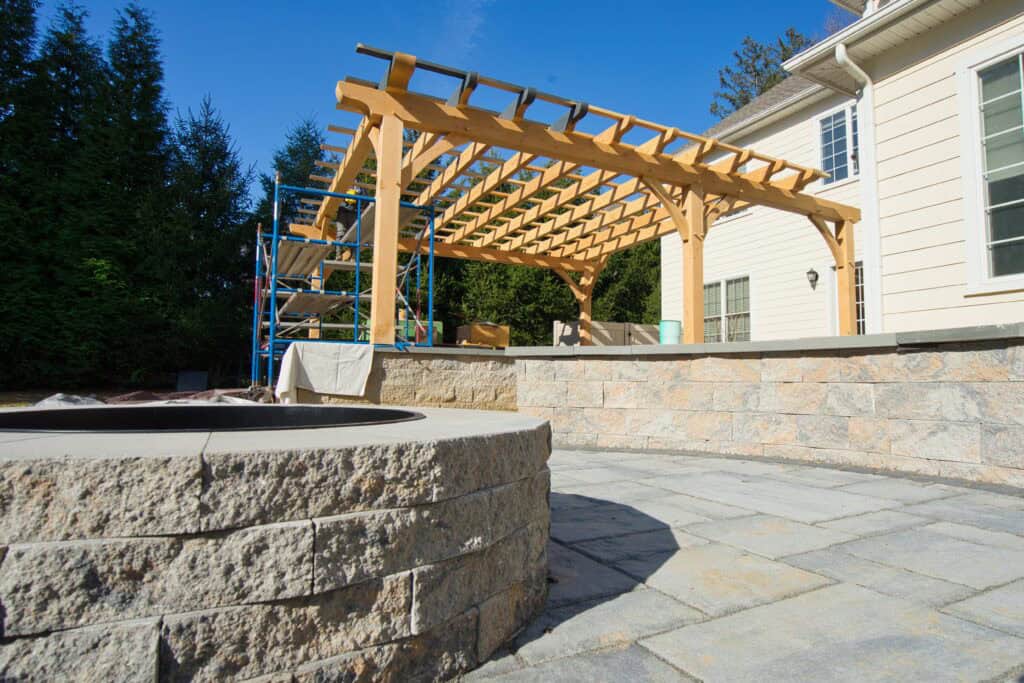
Is Hardscaping Eco-Friendly?
Hardscaping can be made more eco-friendly by considering certain factors and using sustainable practices. Here are some ways to make hardscaping more environmentally friendly:
- Permeable Surfaces: Opt for permeable hardscaping materials, such as permeable pavers or gravel, that allow water to infiltrate the ground instead of contributing to stormwater runoff. This helps to recharge groundwater and reduce the strain on local water systems.
- Use Recycled Materials: Choose hardscaping materials made from recycled content, such as recycled concrete or reclaimed wood. Using recycled materials reduces the demand for new resources and helps divert waste from landfills.
- Local and Natural Materials: Select locally sourced hardscaping materials to reduce the carbon footprint associated with transportation. Additionally, consider using natural materials like stone or wood that are harvested sustainably and have a lower environmental impact.
- Rainwater Harvesting: Incorporate rainwater harvesting systems into your hardscaping design. This can involve capturing rainwater from roofs or hardscape surfaces and using it for irrigation or other purposes, reducing the need for additional water resources.
- Native Plants and Biodiversity: Integrate native plants and create spaces for biodiversity within your hardscaping design. This promotes a healthy ecosystem, supports local wildlife, and reduces the need for excessive irrigation and maintenance.
- Energy-Efficient Lighting: If you plan to incorporate lighting into your hardscaping, choose energy-efficient LED fixtures. LED lights consume less energy, have a longer lifespan, and produce less heat compared to traditional lighting options.
- Proper Drainage and Erosion Control: Ensure that your hardscaping design includes proper drainage systems and erosion control measures. This helps prevent soil erosion, reduces water runoff, and protects nearby water bodies from pollution.
- Maintenance Practices: Adopt sustainable maintenance practices for your hardscaping features. This may include using organic or natural fertilizers, minimizing the use of pesticides and herbicides, and practicing water-efficient irrigation techniques.
By incorporating these eco-friendly practices into your hardscaping design and maintenance, you can minimize the environmental impact and create a more sustainable outdoor space.
Enhancing Your Home with Hardscaping
In conclusion, hardscaping plays a pivotal role in elevating the aesthetics and functionality of your outdoor spaces. By understanding the basics of hardscaping and committing to regular maintenance, you can ensure that your hardscape features stand the test of time. Whether you’re looking to create a serene patio for relaxation or a stunning pathway for added curb appeal, hardscaping offers endless possibilities for transforming your home exterior.
